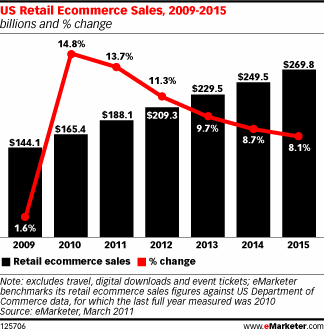As ecommerce sales increase, so does the need for sellers to use inventory management strategies. According to an eMarketer report, the total ecommerce sales in US are predicted to cross $250 billion in year 2015. That’s almost a 60% increase compared to 2010. According to the report –
Most of the growth in ecommerce is coming from incumbent online buyers shifting more of their spending from stores to the internet rather than from the spending power of new online buyers

Increased Sales = Increased Inventory Management
So, what does this mean for ecommerce sellers? Well, they’re definitely going to see an increase in sales and revenue. And there will be more of a demand for their products, which means that they’ll need more of them. Having an increased amount of inventory creates a need for a good inventory management system. As an ecommerce business grows, there is also a need for a quality asset management system.
How Inventory Management Can Help You
Inventory management software can be very beneficial if you need to keep track of a pretty large amount of inventory. It can help with everything from warehouse management to supply chain management, if you’re operating on a large scale. No matter how large your ecommerce business is, inventory programs allow you to keep track of what is inventory, from raw materials to finished goods. Once you have solid inventory management systems in place, you can look for some asset tracking software to help you keep track all of your assets, including cash and receivables, equipment, and supplies.
If you’re in the ecommerce industry, it’s definitely time to celebrate your bright future. Just keep in mind that you might need a little help from the right kind of software to manage your successful business. Luckily, there are plenty of inventory management solutions and asset tracking options.
